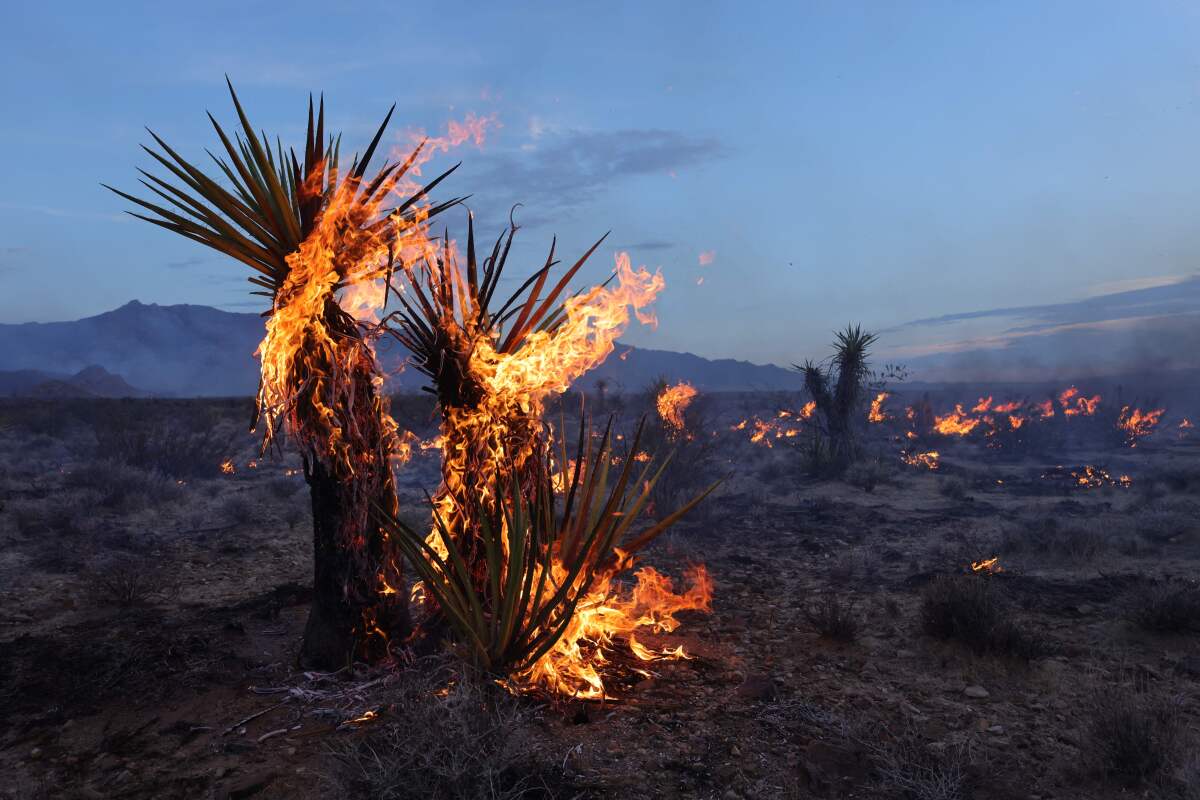Essential California Week in Review: L.A. County could have 1.7 million fewer people by 2060

- Share via
Good morning, and welcome to the Essential California newsletter. It is Saturday, Aug. 5.
Sign up for Essential California
The most important California stories and recommendations in your inbox every morning.
You may occasionally receive promotional content from the Los Angeles Times.
Here’s a look at the top stories of the last week
L.A. County could have 1.7 million fewer people by 2060. The state’s population is expected to remain flat overall. California has been growing steadily since its birth in 1850, and prolonged population stagnation would represent a radical departure.
Gas prices surpass $5 per gallon in California; experts unsure when relief is coming. The news is not all bleak, however.
“At the very least, [prices] should stop going up so quickly,” a AAA spokesperson said.
Trash heaps and wild parties: Blight invades a beloved L.A. escape. Piles of trash left by visitors is a problem that has not only blighted the landscape, but also raised worries over contamination of one of the region’s largest watersheds.
Why child marriage is legal in California — and the unexpected groups fighting to keep it that way. The opposition to a prohibition on child marriage has been driven by progressive groups who are concerned that a total ban on marriage of minors could be a slippery slope and impede constitutional rights or reproductive choices, including access to abortion.
The most quietly ambitious cooking to emerge in Los Angeles this year is at Yess. Calling it a “Japanese seafood restaurant” doesn’t capture the eclectic joys at the Arts District’s next great dining destination.
Free online games
Get our free daily crossword puzzle, sudoku, word search and arcade games in our game center at latimes.com/games.

California’s famed Joshua trees are burning up fast. They might be impossible to replace. “The reality is that Joshua trees are already in a state of decline because of global warming and increasing frequency of drought,” said James Cornett, an ecologist who specializes in the species. “And then on top of that, you throw on a fire like the York fire, and these trees are not likely to recover in our lifetime.”
UFOs had their day in Congress. One strange sighting came at this California launch site. A former Navy pilot testified last week in Congress that a red square the size of a football field hovered over Vandenberg Air Force Base in 2003.
A man found in a barrel at Malibu Lagoon was an aspiring L.A. recording artist. “He was a good kid, good person. He didn’t gang-bang. What happened to him, I just don’t understand,” family friend Patrick Nelson said.
‘No one is coming to our rescue’: Inside rural California’s alarming teacher shortage. It has become so difficult to hire and retain educators that administrators have attended hiring fairs not just across California, but also in Montana, Nevada, New Mexico and Oregon.
L.A. County gave up on a mental health program — and is handing back millions in grants. “What human being would have [that much money] to serve suffering people and give it away? That’s unconscionable to me as a physician, as a public health professional, as a human being,” said Dr. Jonathan Goldfinger.
Flea-borne typhus led to reported deaths in L.A. County for the first time in decades. The illness still remains far below the levels once seen around the U.S. in the 1940s, before “it came down with our efforts to control rodents and with the use of DEET.”
Valley fever could hit California hard. The drought-to-downpour cycle is to blame. Valley fever is caused by a fungus that grows in dirt. People and animals can get sick if they breathe in the dust that contains the fungus.
Enjoying this newsletter?
Your support helps us deliver the news that matters most. Become a Times subscriber.
ICYMI, here are this week’s great reads
A ‘failure to launch’: Why young people are having less sex. The social isolation and transmission scares of the COVID-19 pandemic have no doubt played a role in the shift. But researchers say that’s not the whole story.
It survived ‘Stumptown.’ Now an ancient redwood may finally be protected for good. After years of uncertainty, the 2,000-year-old behemoth known as the Clar Tree may be able to live out the rest of its lengthy life without fear of being felled.
Opinion: Our family of four shared a cramped studio for 25 years. L.A. housing costs nearly kept us there forever. Fortunately, Jennifer and Paula Nazario finally found a home for their family in Los Angeles. “Even so, families should not have to live in cramped, small living spaces to afford rent — and tolerating these conditions should not be the only option renters have when trying to save up for a down payment.”
Today’s week-in-review newsletter was curated by Kevinisha Walker. Please let us know what we can do to make this newsletter more useful to you. Send comments, complaints and ideas to [email protected].
Sign up for Essential California
The most important California stories and recommendations in your inbox every morning.
You may occasionally receive promotional content from the Los Angeles Times.




